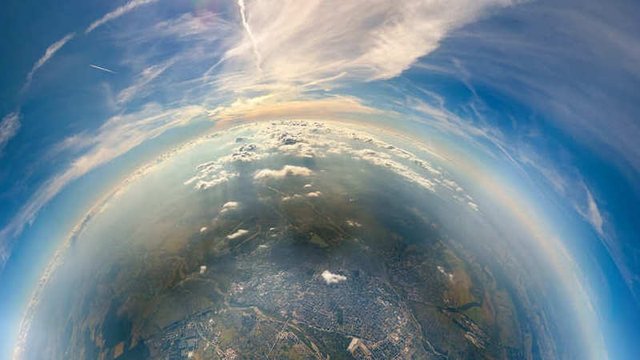

Although we often associate it with the layer that protects the Earth from harmful solar radiation, ozone is much more than that. It has numerous applications across various sectors, especially in environmental protection, healthcare, and industry.
If you're passionate about sustainability and environmental issues, pursuing a master in Sustainability at Universidad Europea is a strategic decision. The program prepares you for a high-demand field where your work can have a real impact on the planet’s future.
In this post, we explain what ozone is, what the ozone layer is, and explore its different types, properties, and practical applications.
What is ozone?
Ozone is a molecule made up of three oxygen atoms (O₃). Unlike the oxygen we breathe (O₂), ozone is highly reactive due to its chemical structure. This makes it effective at neutralizing pollutants and microorganisms, making it a powerful tool in fields like environmental management and public health.
Naturally, ozone is formed when ultraviolet (UV) rays from the sun interact with oxygen in the atmosphere. This reaction mainly takes place in the stratosphere and gives rise to the ozone layer—a crucial shield that protects life on Earth by absorbing most of the sun’s harmful UV-B radiation.
In environmental degree programs, such as those offered by Universidad Europea’s School of Sustainability, students study how ozone interacts with other natural gases and its role in maintaining ecological balance.
Definition of ozone layer
The ozone layer is a region of high ozone concentration in the stratosphere, located about 10 to 50 kilometres above the Earth’s surface. It acts as a natural filter, blocking up to 99% of the sun’s harmful ultraviolet radiation. This protective layer is vital for all forms of life, as it helps prevent skin cancer, eye damage, and harm to ecosystems and agriculture.
Understanding what the ozone layer is and how it functions is essential in sustainability studies. Damage to this layer, such as from human-made chemicals like chlorofluorocarbons (CFCs), can have devastating effects on health and the environment.
Main characteristics of ozone
Ozone’s chemical behaviour explains both its environmental importance and the precautions needed when using it:
- High oxidizing power: Excellent for disinfection and pollutant breakdown.
- Reactive and unstable: Cannot be stored easily; must be produced on-site.
- Distinct odour: Has a sharp smell similar to chlorine, noticeable at low concentrations.
- Short lifespan: Quickly decomposes into oxygen under normal conditions.
These characteristics make ozone both powerful and delicate—beneficial when used correctly, but potentially harmful if mismanaged.
Types of ozone
There are two main types of ozone, differentiated by where they are located and their effects:
Stratospheric Ozone
This is the ozone found in the ozone layer, high in the stratosphere. It is essential for filtering ultraviolet radiation and sustaining life on Earth.
Tropospheric Ozone
Found at ground level, this form of ozone is considered a secondary pollutant. It forms when sunlight interacts with pollutants like nitrogen oxides and volatile organic compounds. In high concentrations, it contributes to smog and can aggravate respiratory conditions and climate change.
Applications of ozone
Ozone's powerful oxidative properties give it a wide range of practical applications:
- Water Treatment: Used to purify drinking water and wastewater by eliminating bacteria and pollutants—an eco-friendly alternative to chlorine.
- Air Purification: Applied in HVAC systems and air purifiers to remove odors, smoke, and particles. Usage must be monitored to avoid health risks.
- Environmental Disinfection: Common in hospitals and labs for sterilizing air and surfaces without chemical residues.
- Food Industry: Helps in preserving food, washing fruits and vegetables, and maintaining hygiene standards.
Advantages and challenges of ozone use
Advantages
- Highly effective against bacteria, viruses, and fungi.
- Leaves no toxic waste—breaks down into oxygen.
- Applicable in diverse sectors (healthcare, food, industrial, environmental).
Challenges
- Toxic at high concentrations—requires strict safety protocols.
- Unstable—must be generated on-site with specialized equipment.
- Higher initial costs for installation and maintenance.
Why study sustainability at Universidad Europea?
Ozone is a fascinating subject with immense practical significance—from understanding what the ozone layer is to using ozone in sustainable practices. If you’re looking to build a career that contributes to a more sustainable future, the School of Sustainability at Universidad Europea offers specialised degrees that prepare you to tackle real-world environmental challenges with scientific and technical expertise.
Article published on June 17, 2025